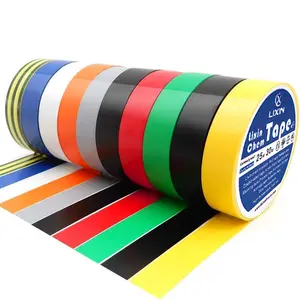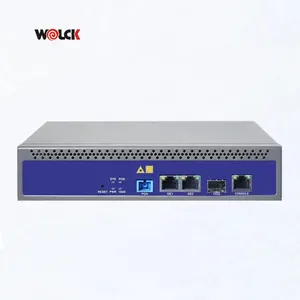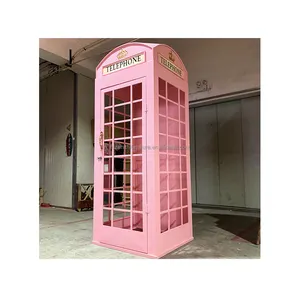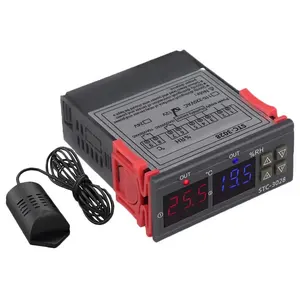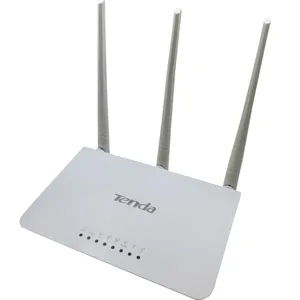Popular in your industry
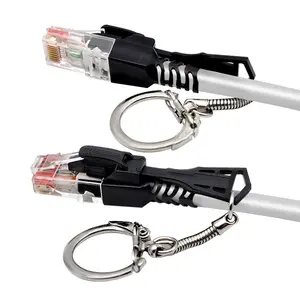

















































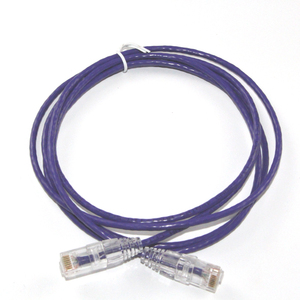





Top categories
About rg45 cable
What is cat6 Ethernet Cable
Cat6 Ethernet cables are high-speed data cables that consist of twisted pair wires, typically used in the telecommunications and networking industry. These cables are designed to support the Cat6 standard, which is an international cabling standard for carrying Gigabit Ethernet data over short distances. The primary audience for Cat6 cables includes network technicians, IT professionals, and organizations that require reliable and efficient networking solutions for their systems and infrastructure.
The construction of Cat6 Ethernet cables is based on the principles of the twisted pair method. This method involves pairing the wires into four twisted groups, which reduces crosstalk and interference, a common issue in parallel cables. The twisted design also provides better signal integrity over longer distances, allowing for data to travel at faster speeds with less loss of quality.
Cat6 cables are backward compatible with the predecessor standards (Cat5 and Cat5e), which means they can be used in systems designed for those standards. However, due to their improved performance, they have become the de facto choice for new installations where higher data rates or more robust connections are required. The cables are available in various lengths and can be used in both commercial and residential environments.
Types of Cat6 Ethernet Cables
CAT6 Ethernet cables come in various types to suit different requirements and applications. The standard Cat6 cable is widely used for general networking purposes, supporting Gigabit Ethernet and is backward compatible with previous standards such as Cat5 and Cat5e. It is commonly utilized in both residential and commercial environments where high-speed data transfer is crucial.
For outdoor use, there are specially designed Cat6 cables with additional protections against the elements. These cables are ideal for connecting outdoor surveillance cameras or providing internet access in outdoor spaces like patios or gardens.
Some Cat6 cables are designed with shielding to protect against electromagnetic interference (EMI) and other sources of electronic noise that can disrupt network signals. This makes them suitable for environments where EMI is a concern, such as near heavy machinery or in radio frequency (RF) rich areas.
In scenarios where both power and data are required over a single cable, there are hybrid Cat6 cables that can provide Power over Ethernet (PoE) capabilities. These are often used to power devices like IP cameras or VoIP phones without needing a separate power supply cable.
How to choose cat6 Ethernet Cable
Selecting the right Cat6 Ethernet cable involves several considerations to ensure it meets the intended networking requirements:
-
Networking Speed: The speed at which data can be transmitted over a network is a critical factor. Businesses should assess their need for gigabit or 10-gigabit speeds and choose accordingly.
-
Cable Length: The distance that the cable needs to cover will influence your choice. Shorter distances might only require standard Cat6 cables while longer distances could necessitate specialized types like Cat6a.
-
PoE Compatibility: For applications where power needs to be supplied through the Ethernet cable, such as IP camera systems or wireless access points, choosing a Cat6 cable that supports Power over Ethernet (PoE) can be very beneficial.
-
Installation Environment: Consider whether the cable will be exposed to harsh conditions like extreme temperatures or moisture. Outdoor applications may require waterproof features while indoor installations might not have such stringent requirements.
-
Future-proofing: With technology evolving rapidly, opting for Cat6 cables can be a prudent choice as they offer higher performance and potential for future upgrades.
By considering these factors, businesses can make informed decisions when sourcing Cat6 Ethernet cables through B2B channels like Alibaba.com.
About cat6 Ethernet Cable on Alibaba.com
Alibaba.com stands out as an exceptional global marketplace where businesses can source a wide range of Cat6 Ethernet Cables tailored to their specific needs. With an extensive selection from suppliers around the world, Alibaba.com provides an efficient platform for finding exactly what you're looking for—whether it's standard UTP cables for everyday office use or specialized FTP or STP cables for complex network installations.
The website's intuitive interface allows you to filter through options based on color, length, material, and other specifications while ensuring ease of communication through features like mobile compatibility and multilingual support. Moreover, Alibaba.com's Trade Assurance service offers a layer of protection that safeguards your transactions until delivery is confirmed—instilling confidence in every purchase.
Alibaba.com has established itself as a leader in facilitating B2B online trade solutions that cater to businesses at every stage of growth. By shopping for Cat6 Ethernet Cables on Alibaba.com, you're not only accessing a wealth of product options but also leveraging a platform designed with your business's scalability and security in mind.
Common FAQs for cat6 Ethernet Cable
What is Cat6 Ethernet Cable used for in networking?
Cat6 Ethernet Cable is used to establish wired local area networks (LANs) and is designed to support data transfer at faster speeds over longer distances than Cat5e cables. It's commonly used in business networks and data centers to provide reliable and high-performance connections.
How does Cat6 differ from Cat5e in terms of performance?
Cat6 has more stringent specifications than Cat5e and is capable of handling 10 Gbps data transfer over longer distances than Cat5e, which makes it suitable for more demanding networking tasks.
Can Cat6 Ethernet Cables be used for PoE (Power over Ethernet) applications?
Yes, Cat6 cables are often used for PoE applications as they provide higher power levels and greater power transmission efficiency than Cat5e. However, it's important to note that not all Cat6 cables support PoE; this is dependent on the cable's design and specification.
What is the difference between UTP and FTP in Cat6 cables?
UTP (Unshielded Twisted Pair) Cat6 cables are widely used for their flexibility and common applications like data transfer and voice transmission. FTP (Foil Twisted Pair) Cat6 cables have an additional layer of foil shielding that provides extra protection against electromagnetic interference and is often used in more challenging networking environments.
Are there different types of Cat6 cables available?
Yes, there are various types of Cat6 cables, including solid conductor, stranded conductor, shielded, and foiled twisted pair cables. Each type is suited for specific networking needs based on factors such as installation environment, flexibility required, and potential for electromagnetic interference.
How do I choose the right Cat6 cable for my business?
Choosing the right Cat6 cable depends on factors such as transmission speed, cable length, environmental conditions, and budget considerations. Businesses should assess their network infrastructure's requirements and select a cable that meets those needs without overspending.
Can Cat6 cables be customized for specific networking projects?
Yes, many suppliers on Alibaba.com offer customization options for Cat6 cables to meet specific project requirements. Customizations can include unique lengths, colors, and even branding.
What should I consider when purchasing bulk Cat6 cables?
When purchasing bulk Cat6 cables, consider the installation environment, potential for future upgrades, desired cable lengths, and any special features like easier termination or gel-filled construction that may enhance performance or durability.
Is it possible to use Cat6 cables for outdoor networking projects?
For outdoor networking projects, it's advisable to use gel-filled or direct burial Cat6 cables that are specifically designed to withstand harsh weather conditions and prevent moisture ingress that could damage the cable.
What is the maximum length for a Cat6 Ethernet Cable?
The maximum length for a Cat6 Ethernet cable is typically 100 meters (328 feet). However, Power over Ethernet (PoE) technology can extend this range to 100 meters when used with appropriate equipment.
How do I know if a Cat6 cable is suitable for my business's networking needs?
Assessing suitability involves evaluating your current network setup, bandwidth requirements, environmental conditions, and future technology needs. It may also require consultation with your supplier or a network specialist.
Can I use Cat6 cables for video streaming?
Yes, Cat6 cables can be used for video streaming. However, you may need to consider higher performance cables like Cat6a or Cat6e if you are streaming HD content or require higher resolutions.
Are there any color options for Cat6 Ethernet Cables?
Cat6 Ethernet cables come in various color options such as white, gray, yellow, red, orange, brown, and blue. The choice of color may depend on aesthetic preferences or color-coding conventions used in your industry.
How does the shielding in a Cat6 Ethernet cable benefit my business?
Shielding in a Cat6 Ethernet cable protects it from electromagnetic interference which can cause signal degradation or loss over long distances. This is particularly important in environments with high levels of electromagnetic noise.
What are the environmental specifications I should look for in a Cat6 Ethernet Cable?
Look for environmental specifications that match your installation requirements such as exposure to chemicals, temperature range, or direct burial conditions. Cables with higher environmental ratings offer better protection against these factors.
How does cable length impact my choice of Cat6 Ethernet Cable?
Cable length impacts the flexibility and convenience of cable placement. Longer lengths may require additional support or protection against physical stress on the cable, while shorter lengths may reduce clutter and potential installation costs.

